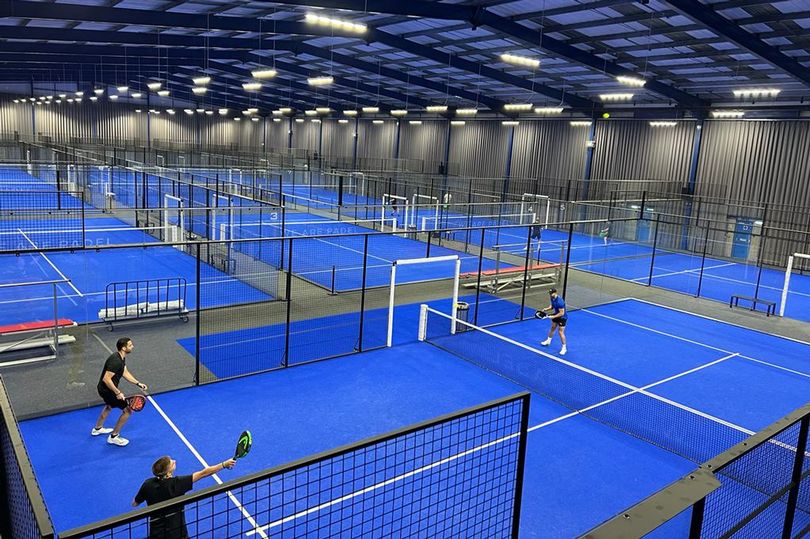What is a tennis grip cover?
11月 15, 2022
Replacement grips, grip covers, overgrips...!?
What's the difference and what you need to know
Tennis is a sport with a multitude of accessories. Whether it’s practice, warm up or match apparel, on-court equipment (bags, racket, shoes, balls…) or off-court training products, there is an abundance of items to sift through. In this post we will focus on grips and grip covers and the different roles they play for tennis players.
What is the difference between grip covers and tennis racket grips?
Grip covers are a tennis racket accessory that cover racket grips when transporting them on and off the court. They have many benefits:
- By wrapping around and ‘covering’ grips, they keep grips clean when carrying rackets in bags that do not fully enclose the handles such as backpacks and totes. This can help extend the life of grips if they are tacky because when this type of grip collects dirt and grime, they lose the sticky sensation and become less performant.
- Second, they are water resistant. This means that on the days you to commute to the courts in rainy weather your grips will be dry when you take the covers off and start hitting balls. If you’ve ever had the misfortune of trying to dry off grips that got caught in the rain, you know that it’s not a quick process.
- Third, light coloured grips get dirty very quickly and can look unsightly when sticking out from a racket bag as a consequence. If you carry your racket bag to formal settings like your workplace or to a restaurant or bar after work, the dirty grips can be quite the eyesore.
Racket grips are items which cover the grip a racket to provide comfort when you play. New rackets typically come with a cushion grip or (less commonly) a leather grip which wear out over time due to friction and sweat. If the grip is a light colour – such as a white or a pastel hue – it can quickly become discoloured due to use (especially if you tend to play outdoors or on clay).
Which type of grip cover should I choose?
The type of grip cover that will work the best for you depends on your lifestyle and taste preferences. Both leather and neoprene grip covers available from Epirus fit all typical tennis grip sizes. Both styles have Velcro closures which allow adjustments via tightening and loosening them so they fit your racket snugly.
In general, if you prefer more classic or traditional apparel and accessories, you will gravitate towards the leather option. Made from calf leather and handcrafted in Europe, these grip covers actually get better with time as they become more supple from use. On the other hand, if you’re a fan of a sportier, more modern look, the neoprene variant is on point for you.
Available in both bright (neon yellow and pink, red, blue and purple), neutral colours (black, white) and monochrome prints, there is a wide variety to choose from. If you carry more than one racket, consider choosing two different, complementary colours or a solid colour and a print for an eye-catching look. The neoprene grip covers are ideal if you want to add pop of colour to a black or grey bag.
Which type of racket grip should I choose?
The racket grips (a broad classification for replacement grips and overgrips) have different focal qualities such as tackiness (e.g. overgrips that have a slightly sticky sensation), absorbency (e.g. Tourna Grip) and comfort (e.g. cushion grips). Fundamentally, replacement grips are designed to be the first / base layer between your hand and the tennis racket frame. The terms “replacement” relates to the eventual need to replace the grip your racket came with when you bought it.
In contrast, “overgrips” are thin grips meant to sit on top of a replacement grip. There is no need to use overgrips per se. However, if you don’t use one, you will end up replacing the comparably more expensive replacement / base grip more often.
The choice between grip types comes down to your preferred sensation, the typical conditions in which you play and the amount of money you want to invest in grips.
Some considerations to keep in mind:
- Tacky grips tend to have a shorter lifespan than grips with a neutral or absorbent sensation. Thus, you will be spending more to replace them frequently if you play on a regular basis.
- If you play in hot and/or humid weather, it’s advisable to consider absorbent grips for blister mitigation because non-absorbent grips can become saturated with moisture and slippery as a result.
- If you value the feel of the ball on your strings over comfort, you might lean towards thin grips as opposed to cushion grips which mute the feeling of impact.
How often should I replace grip covers?
You don’t need to replace grip covers very often because they aren’t subjected to the type of on-court wear and tear that could cause them to quickly break down. Epirus neoprene and leather grip covers should last years even if they’re used regularly because they’re made from high quality materials created by hand.
How often should I replace racket grips?
There is an important technical consideration to keep in mind when thinking about replacing grips. If your grip is worn out to the extent that you are compelled to grip the racket very tightly to keep it from turning in your hand, then it is compromising your strokes and shot-making as a consequence. Ideally you want to hold your grip only as firmly as you need to keep the racket in your hand so that you have manoeuvrability for spin generation and improvisation as needed. Holding onto your racket too tightly when you play will actually result in less pace generation, adaptability and potential injuries over time.
Also in Tennis Hacks

テニスプレーヤーに最高の贈り物
8月 08, 2025
テニス中毒の親/友達/おねしょ/パートナーにとって理想的なテニスギフトを探していますが、刺激を受けていませんか?私たちは調査を行い、さまざまな価格帯の新鮮なアイデアのリストを思いつきました。オプションには、これまで聞いたことがないかもしれないが、テニスの世界に波を起こすエキサイティングな新しいブランドが含まれます...

The 10 Best Gifts for Padel Players: Padel Bags, Covers & More
8月 05, 2025

The definitive guide to tennis bags for travel
8月 01, 2025
Flying with tennis racket can be a perplexing experience. Each airline has a different policy that may or may not give explicit instructions about your tennis gear. Fear not! We've done extensive research on this topic and provided an overview of the requirements of the major airlines. A little preview? Our Backpack and 24 Hour bag comply with carry on restrictions across the board...
Be the first to hear about new products, sales, give-aways and more...
© 2025 Epirus London.
Shopifyを搭載







